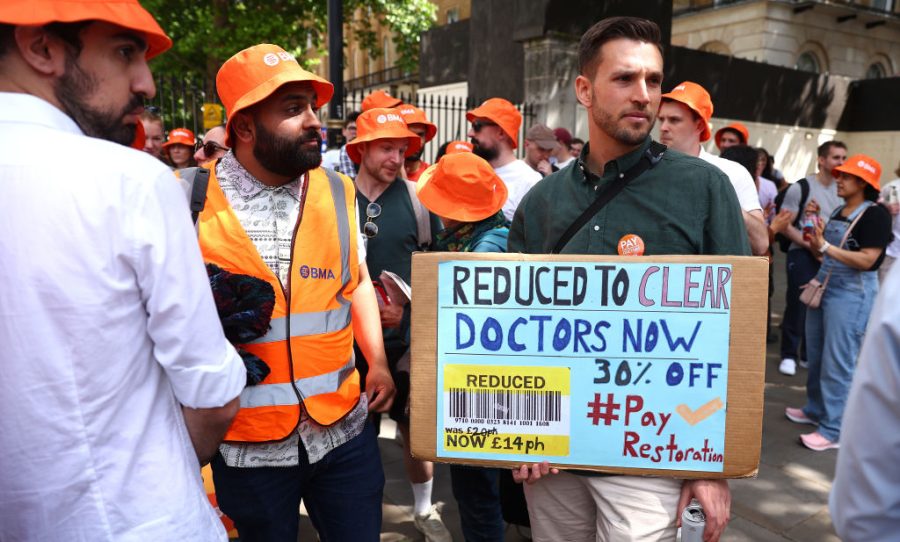So, Ed Miliband has relented, and decided that after all it is not a good idea to build his green energy revolution on the back of slave labour in the Uighur region of China. Miliband had refused to back a Lords amendment to the Great British Energy Bill, first reported by Steerpike, which would have forced the putative government-owned green energy company to address the use of slave labour in its supply chains – Labour MPs were ordered to vote against it. Now the Energy and Climate Change Secretary has produced his own amendment to much the same effect.
It is a victory for campaigners against modern slavery and also for commonsense – it would be absurd to tolerate forced labour in solar panel supply chains while we have government bodies cringing over Britain’s involvement in the slave trade two centuries ago. Trouble is, where does it leave Miliband’s dream of achieving 95 per cent zero carbon electricity by 2030? His target has already been subtly reduced from a target of 100 per cent clean energy by that date. But it is certainly not going to be helped by a bar on slave labour in the solar panel supply chain.
The solar industry’s problem is not that there are one or two dodgy factories churning out suspiciously cheap panels, but that slave labour is integrated heavily into the supply of polysilicon, a material which is found in 95 per cent of the world’s photovoltaic panels. According to a report by Sheffield Hallam University in 2021, nearly half of this material comes from the Xinjiang region and a small number of factories there, all of which have been linked to Chinese government labour programmes. The report details evidence of forced labour, from eyewitness accounts to material put out by the Chinese government itself. Many panels manufactured outside China may also contain polysilicon produced in Uighur factories. But how to tell which ones? Great British Energy, once it finally gets on its feet, is going to have to commit considerable resources to tracking the supply chain.
It is hard to imagine that this is going to result in anything other than a sharp rise in costs, as well as a delay in the construction of solar farms – and that is a delay Miliband’s 2030 target does not allow. Few in the energy business believe that the target is achievable at all, at any price, given the constraints in the supply chain for all kinds of materials and services – the equipment required to build offshore wind farms is another blockage. Miliband’s plans involve a total of 47 gigawatts of solar capacity by 2030. To put that into context, as of last September Britain had 17 gigawatts of installed capacity.
Miliband has staked his reputation on his 2030 target for clean electricity. The previous government already had a target of decarbonising the grid by 2035 – which Miliband damned as insufficiently ambitious. But in January, analysts Cornwall Insight predicted that only two thirds of the solar and wind farms which would be required to achieve a 95 percent clean grid will actually be built by 2030. Requirements to scour the supply chains for involvement of slave labour make even that look doubtful.
Moreover, Miliband promised that his clean energy plans would cut average domestic energy bills by £300. There is little sign of anything like that happening. If we end up relying on panels built outside China, the rapid fall in the cost of solar energy over the past decade looks like it will be swiftly reversed.









Comments